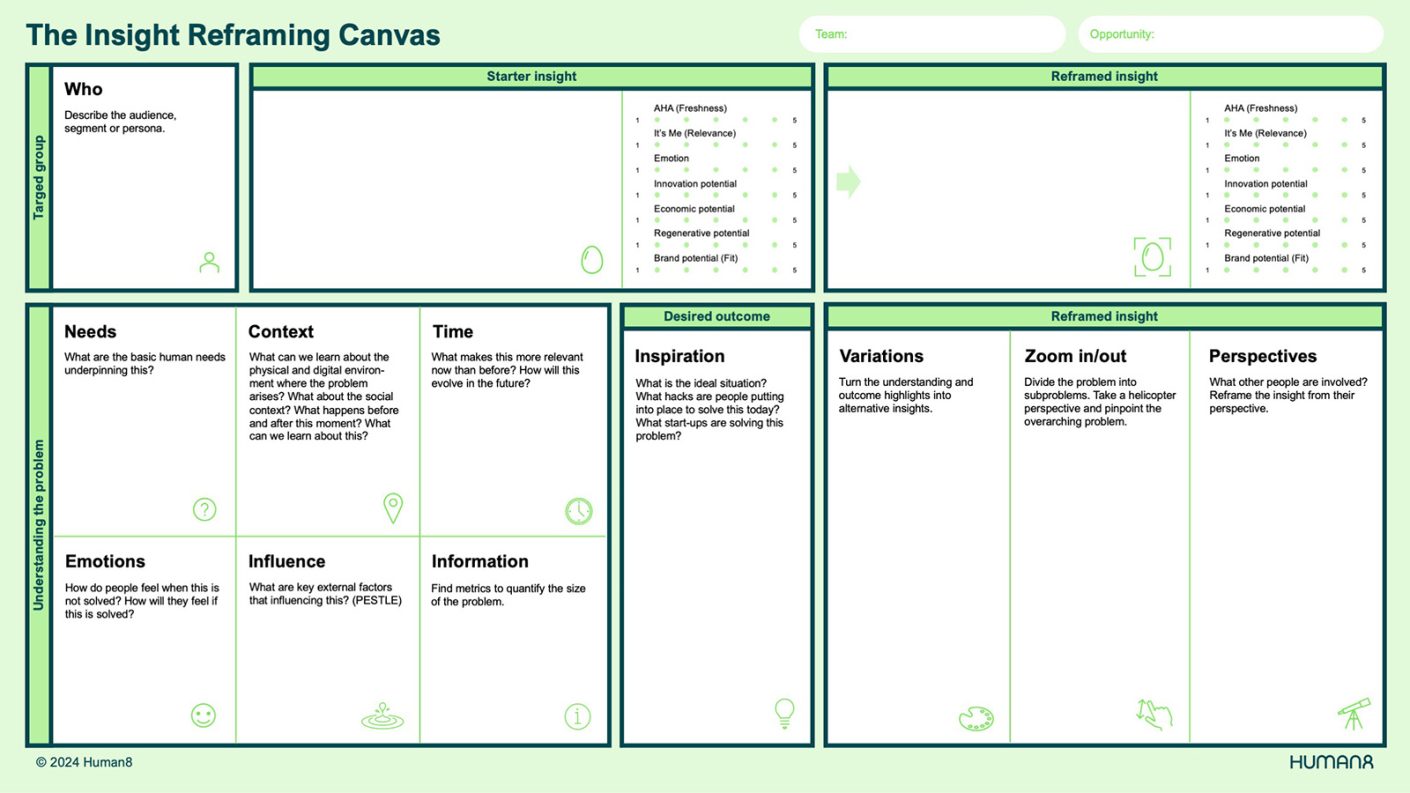Blog
Tech x Empathy: how AI can bring you closer to consumers
How AI can be a powerful enabler of consumer empathy.
Delphine Vantomme
10 October 2024
4 min read
Imagine walking into a grocery shop and being greeted, not by a friendly cashier, but by rows of self-scan checkouts. Efficient? Yes. But while the speed of tech streamlines our shopping experience, something valuable is lost – the human connection. Interactions like a simple chat with the cashier, once part of daily life, are now replaced by algorithms and automation. This illustrates a growing challenge: as businesses embrace AI, there’s a risk of eroding empathy – losing touch with the people behind the numbers. Recognising this, Dutch supermarket Jumbo launched the ‘kletskassa’ – a dedicated checkout for customers who want that friendly interaction.
But this is also a challenge we see in market research when helping brand stakeholders step into the shoes of their consumers to see the world from their perspective. Our belief centres around real human connections. We prioritise authentic listening and sensing – connecting with real people and emotions, rather than relying on AI and synthetic data as a replacement for genuine interaction. But tech shouldn’t stay out of the picture. On the contrary, if used wisely it can become a powerful enabler of consumer empathy. Here’s how brands can harness AI and tech to bring stakeholders closer to consumers.
-
Insight catalyst
AI can act as a powerful catalyst, amplifying insights and offering fresh perspectives. Our ‘Insight Reframing Canvas’, for instance, utilizes AI to explore insights from multiple angles, moving beyond surface observations to reveal the emotional drivers behind consumer behaviours. It links insights from previous research, industry reports, and new data, creating a richer understanding of your audience.

Such AI-driven tools also helped refine insights during the Philips project. Initial findings revealed that Gen Z parents were open to integrating AI into baby products, but the challenge lay in determining how much technology was too much – avoiding the “creepy” factor. AI helped in two ways: by quickly identifying friction points and then creating sacrificial product concepts. These concepts were then shared back with the community for feedback – not focusing on the concepts themselves but using them as a way to delve deeper. This process allowed Philips to understand the fine line between useful and intrusive tech. Gen Z parents, for instance, were particularly concerned about AI disrupting their emotional bond with their child, while Gen Y parents were more focused on data privacy.
-
AI-powered immersion
Consumer immersion experiences, such as consumer safaris, are all about stepping into the shoes of the consumer, giving stakeholders a firsthand understanding of their perspectives, emotions and behaviours. AI can take this consumer immersion a step further. Think about AI-powered audience avatars, fuelled by previous research, that offer a dynamic way to engage with consumers. These avatars can represent diverse consumer personas, allowing stakeholders to interact with them before or during workshops.
In one project with Beyond Meat, we surveyed 4,500 people across three countries (Germany, Netherlands, UK) and identified seven key consumer personas. These personas were brought to life in a workshop with AI-powered avatars. Stakeholders interacted with the chatbot and this experience was enriched with AI-generated mood boards. The result? A deeper, more tangible connection with the audience, allowing participants to visualize and truly understand their consumers on a human level. This combination of AI and consumer immersion can transform consumer insights into real, actionable consumer empathy.
-
Connection at scale
Another powerful way to foster consumer empathy is by creating direct, meaningful conversations between consumers and stakeholders. This is exactly what we’ve achieved with L’Oréal through a global ‘consumer connect’ programme. It starts with training internal teams, ensuring they feel comfortable engaging with consumers in authentic, insightful discussions. L’Oréal’s stakeholders can then book sessions via a DIY tool, giving them access to thousands of pre-screened consumers across 29 countries. Afterwards the stories and learnings are shared back to create internal momentum while activity and budget levels are tracked to ensure continuous improvement.
AI plays a crucial role in enhancing this process. To extend the longevity of consumer connects, session recordings are stored in an AI-powered gallery, allowing stakeholders to search the videos by keywords, segments and dates. They can also create automated highlight reels to share key moments across the business. AI-generated summaries, original transcriptions and English translations accompany each video, making insights even more accessible. Since 2024, L’Oréal has begun exploring these AI tools to efficiently capture the essence of each session. Additionally, the beauty brand is looking into AI avatars as a future tool to unlock this wealth of rich, authentic human data in a new and more impactful way for the business.
In a world increasingly driven by data, it’s crucial to remember that you don’t have to choose between consumer empathy and AI. In fact, AI can play a pivotal role where consumer empathy is essential. By blending human understanding with AI’s capabilities – from AI-powered personas to tools that distill key insights – brands can create deeper, more meaningful connections with their audience. This combination enables stakeholders to not only see the data but to truly feel the human stories behind it, unlocking actionable consumer empathy at scale.
Ready to build empathy?
Let’s connect